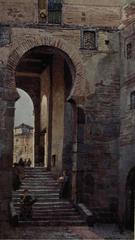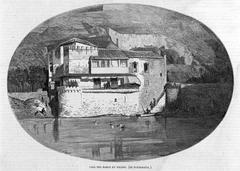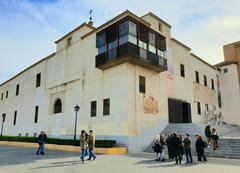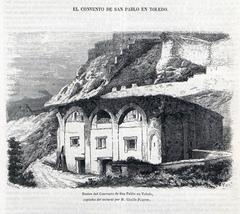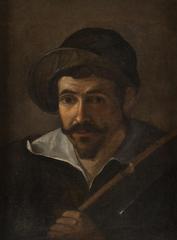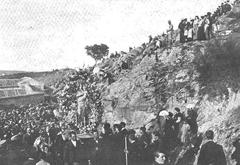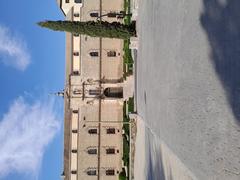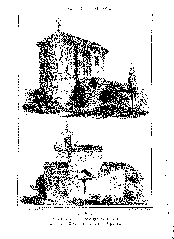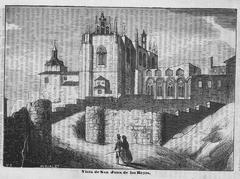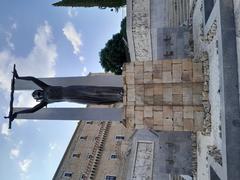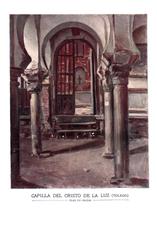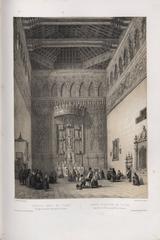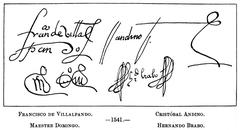Visiting Yacimiento Arqueológico Cerro del Bú: A Complete Guide
Date: 31/07/2024
Introduction
Toledo, a city renowned for its historical depth and cultural wealth, beckons history enthusiasts and curious travelers alike to explore its many treasures. Among these is the Yacimiento Arqueológico Cerro del Bú, an archaeological site of profound historical significance located on the left bank of the Tagus River (Catedral de Toledo). Spanning over 15,000 square meters, Cerro del Bú offers a captivating journey through time, with its roots tracing back to the Bronze Age and extending into the medieval period. This site provides invaluable insights into early human settlements and the strategic importance of Toledo throughout various historical epochs (Cultura Castilla-La Mancha). Visitors are invited to delve into the past through well-preserved artifacts, substantial construction stones, and remnants of a Moorish fort. Recognized as a Bien de Interés Cultural (BIC) in 1992, Cerro del Bú is not only a testament to Toledo’s rich history but also a vital component of its cultural heritage (Wikipedia). This comprehensive guide aims to provide detailed information on the site’s history, visiting hours, ticketing, and nearby attractions, ensuring visitors have a memorable and enriching experience.
Table of Contents
- [Exploring the Yacimiento Arqueológico Cerro del Bú: History, Visiting Hours, and Tickets](#exploring-the-yacimiento-arqueológico-cerro-del-bú-history-visiting-hours-and-ticketsexploring-the-yacimiento-arqueológico-cerro-del-bú-history-visiting-hours-and-tickets)
- [Introduction](#introductionintroduction)
- [Prehistoric Occupation](#prehistoric-occupationprehistoric-occupation)
- [Bronze Age Settlement](#bronze-age-settlementbronze-age-settlement)
- [Medieval Occupation](#medieval-occupationmedieval-occupation)
- [Archaeological Discoveries](#archaeological-discoveriesarchaeological-discoveries)
- [Cultural Heritage Status](#cultural-heritage-statuscultural-heritage-status)
- [Integration with Toledo’s Historical Landscape](#integration-with-toledos-historical-landscapeintegration-with-toledos-historical-landscape)
- [Guided Tours and Public Access](#guided-tours-and-public-accessguided-tours-and-public-access)
- [Ticket Prices and Visiting Hours](#ticket-prices-and-visiting-hoursticket-prices-and-visiting-hours)
- [Preservation Efforts](#preservation-effortspreservation-efforts)
- [Educational and Research Opportunities](#educational-and-research-opportunitieseducational-and-research-opportunities)
- [FAQ](#faqfaq)
- [Conclusion](#conclusionconclusion)
- [Nearby Attractions](#nearby-attractionsnearby-attractions)
- [Mirador del Valle](#mirador-del-vallemirador-del-valle)
- [Catedral de Toledo](#catedral-de-toledocatedral-de-toledo)
- [Sinagoga del Tránsito](#sinagoga-del-tránsitosinagoga-del-tránsito)
- [Museo de Santa Cruz](#museo-de-santa-cruzmuseo-de-santa-cruz)
- [Museo del Greco](#museo-del-grecomuseo-del-greco)
- [Practical Information](#practical-informationpractical-information)
- [How to Get There](#how-to-get-therehow-to-get-there)
- [Nearby Facilities](#nearby-facilitiesnearby-facilities)
Exploring the Yacimiento Arqueológico Cerro del Bú: History, Visiting Hours, and Tickets
Prehistoric Occupation
The Yacimiento Arqueológico Cerro del Bú’s earliest phase of occupation dates back to the Bronze Age, specifically between the 20th and 15th centuries BCE. This period is characterized by the presence of numerous flint tools and a few ceramic fragments, indicating early human activity (Catedral de Toledo). The strategic location of the hill, with its isolation and rugged terrain, made it an ideal settlement for prehistoric communities seeking protection and resources.
Bronze Age Settlement
The Bronze Age settlement at Cerro del Bú is one of the most significant archaeological findings in the region. The site covers an area of over 15,000 square meters, making it one of the largest and most important prehistoric sites in Toledo (Cultura Castilla-La Mancha). Excavations have revealed substantial construction stones with visible foundations, suggesting the presence of well-established structures. The artifacts found, including flint tools and pottery, provide valuable insights into the daily lives and technological advancements of the Bronze Age inhabitants.
Medieval Occupation
The second major phase of occupation at Cerro del Bú occurred during the medieval period, around the 10th century CE. This phase is marked by the construction of a Moorish fort, reflecting the site’s continued strategic importance. The fortification was likely built during the Islamic rule of the Iberian Peninsula, specifically during the time of Abderraman III’s siege of Toledo in 930 CE (En Castilla-La Mancha). The remains of the fort include masonry and rammed earth walls, typical of Andalusian military architecture.
Archaeological Discoveries
Archaeological investigations at Cerro del Bú have been ongoing since the early 20th century. The first significant excavation took place between 1904 and 1905, leading to the discovery of the site’s prehistoric and medieval layers (FUNCi). Subsequent excavations in the 1980s, conducted by the Colegio Universitario de Toledo, and more recent campaigns in 2014-2015 by the Consorcio de Toledo, have further enriched our understanding of the site’s historical significance. These excavations have uncovered a wealth of artifacts, including tools, pottery, and structural remains, which have been crucial in reconstructing the history of human occupation at Cerro del Bú.
Cultural Heritage Status
Recognizing its historical and cultural importance, Cerro del Bú was designated as a Bien de Interés Cultural (BIC) in the category of an archaeological zone on April 28, 1992. This designation was officially published in the Official Gazette of Castilla-La Mancha on May 20, 1992 (Wikipedia). The BIC status ensures the protection and preservation of the site, allowing for continued archaeological research and public education.
Integration with Toledo’s Historical Landscape
Cerro del Bú is not only significant for its archaeological value but also for its integration into the broader historical landscape of Toledo. The site is located near several other important historical landmarks, including the Mirador del Valle viewpoint, which offers panoramic views of Toledo and the Tagus River (Lonely Planet). Visitors to Cerro del Bú can also explore nearby attractions such as the Catedral de Toledo, the Sinagoga del Tránsito, and the Museo de Santa Cruz, all of which provide additional context to the rich history of the region.
Guided Tours and Public Access
To enhance public understanding and appreciation of Cerro del Bú, guided tours are available, offering detailed insights into the site’s historical significance. These tours are conducted by knowledgeable guides and are limited to small groups to ensure a personalized experience. Tours typically last between 45 minutes to an hour and are scheduled between 10 AM to 2 PM and 5 PM to 7 PM (En Castilla-La Mancha). Visitors are advised to wear comfortable clothing and suitable footwear for walking, as the terrain can be uneven.
Ticket Prices and Visiting Hours
The site is open to visitors year-round, with hours varying depending on the season. From March to October, visiting hours are from 10 AM to 7 PM, while from November to February, the site is open from 10 AM to 5 PM. Tickets can be purchased at the entrance or online, with prices as follows:
- Adults: €5
- Students and Seniors: €3
- Children under 12: Free
Discounts are available for group bookings, and special events may have different pricing.
Preservation Efforts
The preservation of Cerro del Bú is a collaborative effort involving various institutions, including the Ayuntamiento de Toledo and the Consorcio de Toledo. These organizations have undertaken significant measures to protect and maintain the site, including the installation of explanatory boards and site maps to educate visitors about the historical context and significance of the archaeological remains (Spotting History). Additionally, recent interventions have focused on stabilizing the structural remains and preventing further deterioration.
Educational and Research Opportunities
Cerro del Bú serves as an important educational resource for students, researchers, and history enthusiasts. The site offers a unique opportunity to study the early human settlements and medieval fortifications in the region. Educational programs and workshops are often organized in collaboration with local universities and cultural institutions, providing hands-on learning experiences and fostering a deeper understanding of the region’s historical heritage (Catedral de Toledo).
FAQ
What are the visiting hours for Cerro del Bú?
- From March to October: 10 AM to 7 PM
- From November to February: 10 AM to 5 PM
How much do tickets cost for Cerro del Bú?
- Adults: €5
- Students and Seniors: €3
- Children under 12: Free
Are there guided tours available?
- Yes, guided tours are offered between 10 AM to 2 PM and 5 PM to 7 PM.
What should I wear when visiting Cerro del Bú?
- Wear comfortable clothing and suitable footwear for walking, as the terrain can be uneven.
Conclusion
The Yacimiento Arqueológico Cerro del Bú is a testament to the rich and diverse history of Toledo. From its prehistoric origins to its medieval fortifications, the site offers invaluable insights into the region’s past. Through ongoing archaeological research, preservation efforts, and public education, Cerro del Bú continues to be a vital link to understanding the historical development of Toledo and its significance in the broader context of Spanish history. Plan your visit today, and immerse yourself in the captivating history of this extraordinary site.
Nearby Attractions
Mirador del Valle
Located just 0.11 miles from Cerro del Bú, the Mirador del Valle viewpoint is a must-visit for breathtaking views of Toledo. The viewpoint provides an excellent opportunity to capture the city’s beauty and is a perfect complement to a visit to the archaeological site (Lonely Planet).
Catedral de Toledo
Approximately 0.46 miles from Cerro del Bú, the Catedral de Toledo is one of Spain’s top 10 cathedrals. This magnificent example of medieval Gothic architecture boasts an enormous interior and is a testament to Toledo’s rich religious history (Lonely Planet).
Sinagoga del Tránsito
Located 0.67 miles from Cerro del Bú, the Sinagoga del Tránsito was built in 1355 and now houses the Museo Sefardí. This museum offers a glimpse into the Sephardic culture that once thrived in Toledo (Lonely Planet).
Museo de Santa Cruz
Situated 0.55 miles from Cerro del Bú, the Museo de Santa Cruz is housed in a 16th-century building that was once a hospital. The museum features ornate plateresque architecture and a collection of artworks and historical artifacts (Lonely Planet).
Museo del Greco
About 0.63 miles from Cerro del Bú, the Museo del Greco is dedicated to the famous painter El Greco. The museum is located in a house that was believed to be El Greco’s residence and has been restored to reflect the period’s style (Lonely Planet).
Practical Information
How to Get There
The site is located on the less populated side of the Río Tajo, south of Toledo. Visitors can reach the site by crossing the river and following the path that leads down from the main road. Public transportation options are available, and parking is accessible for those traveling by car (Spotting History).
Nearby Facilities
While visiting Cerro del Bú, tourists can take advantage of the nearby facilities in Toledo, including restaurants, cafes, and shops. The city’s rich cultural heritage and vibrant atmosphere provide plenty of opportunities for exploration and enjoyment beyond the archaeological site (Lonely Planet).
Conclusion
The Yacimiento Arqueológico Cerro del Bú stands as a monumental testament to the rich and layered history of Toledo. From its origins in the Bronze Age, through its medieval fortifications, to its present status as a protected cultural heritage site, Cerro del Bú offers an unparalleled window into the past. The site’s well-preserved artifacts and structural remains provide profound insights into the lives and advancements of its ancient and medieval inhabitants (FUNCi). As visitors explore this archaeological gem, they are not only treated to historical revelations but also to the breathtaking landscapes that surround it, including the panoramic views from the Mirador del Valle (Lonely Planet). Through guided tours, educational programs, and preservation efforts, Cerro del Bú continues to be a vital resource for understanding Toledo’s historical significance. Whether you are a history buff, a student, or a casual traveler, a visit to Cerro del Bú promises to be a deeply enriching experience. Plan your visit today and immerse yourself in the compelling history that this extraordinary site has to offer.
References
- Catedral de Toledo, 2024, https://catedraldetoledo.es/cerro-del-bu/
- Cultura Castilla-La Mancha, 2024, https://cultura.castillalamancha.es/patrimonio/catalogo-patrimonio-cultural/cerro-del-bu
- FUNCi, 2024, https://funci.org/inventario/cerro-del-bu/
- Lonely Planet, 2024, https://www.lonelyplanet.com/spain/castilla-la-mancha/toledo/attractions/cerro-del-bu/a/poi-sig/1531101/360759
- Wikipedia, 2024, https://en.wikipedia.org/wiki/Cerro_del_Bu
